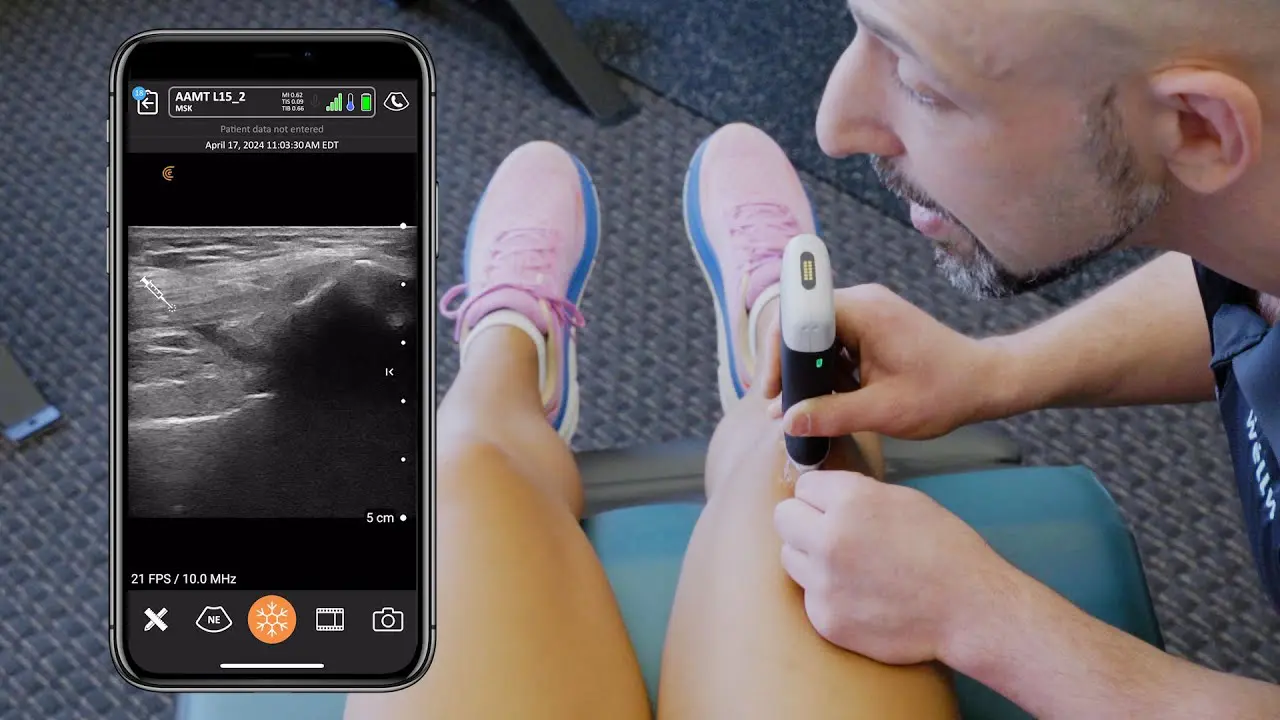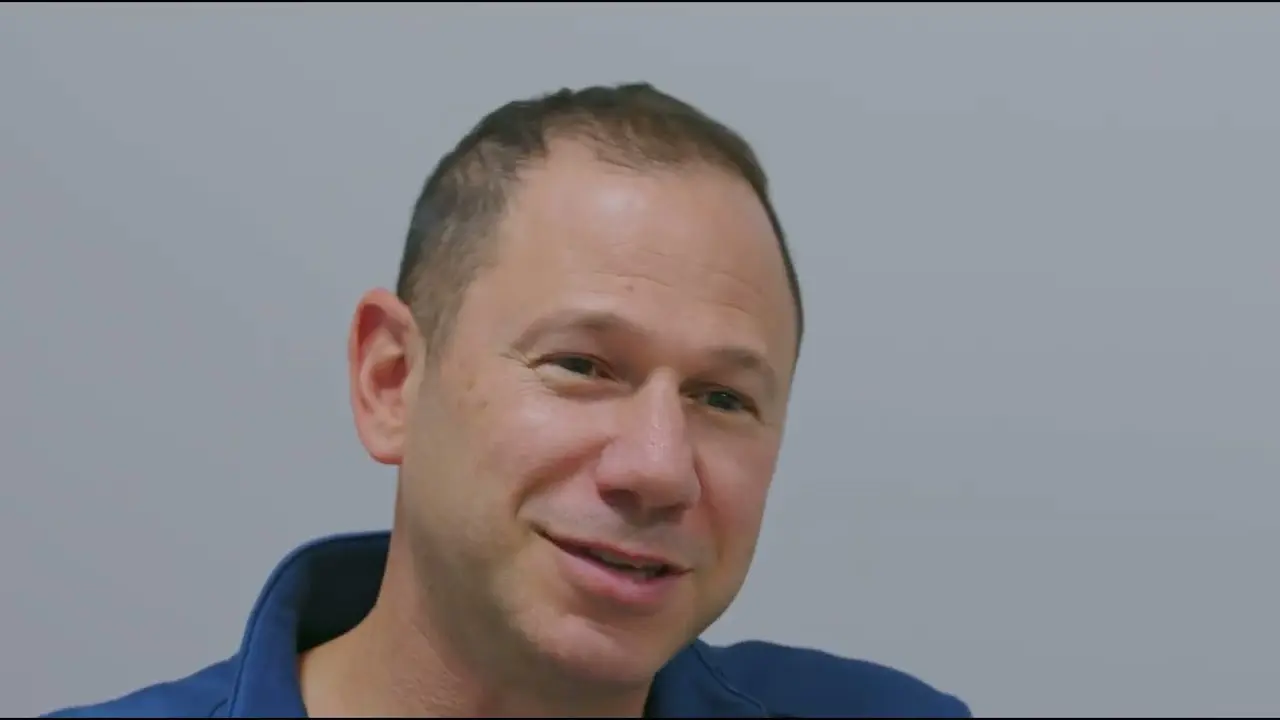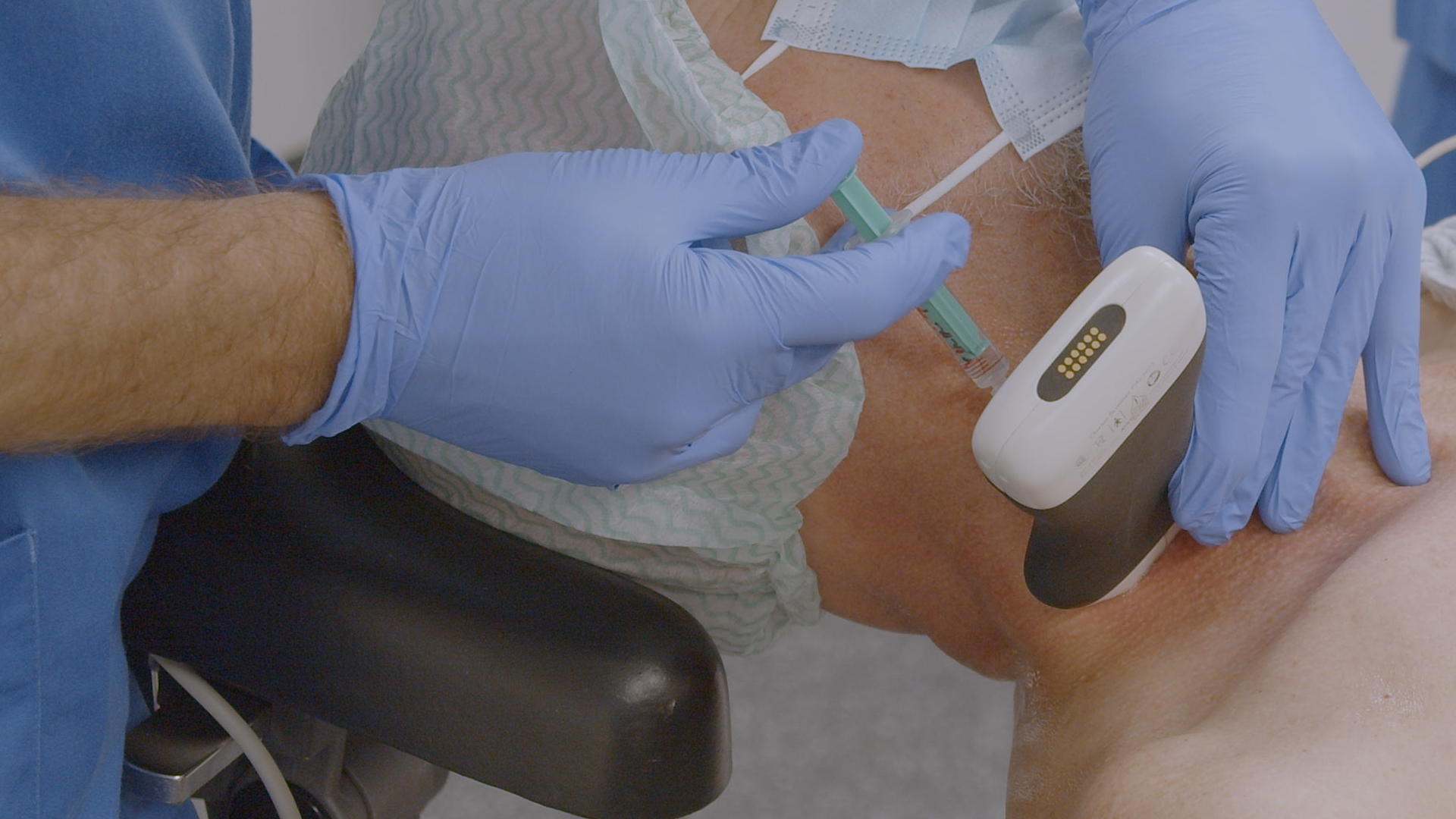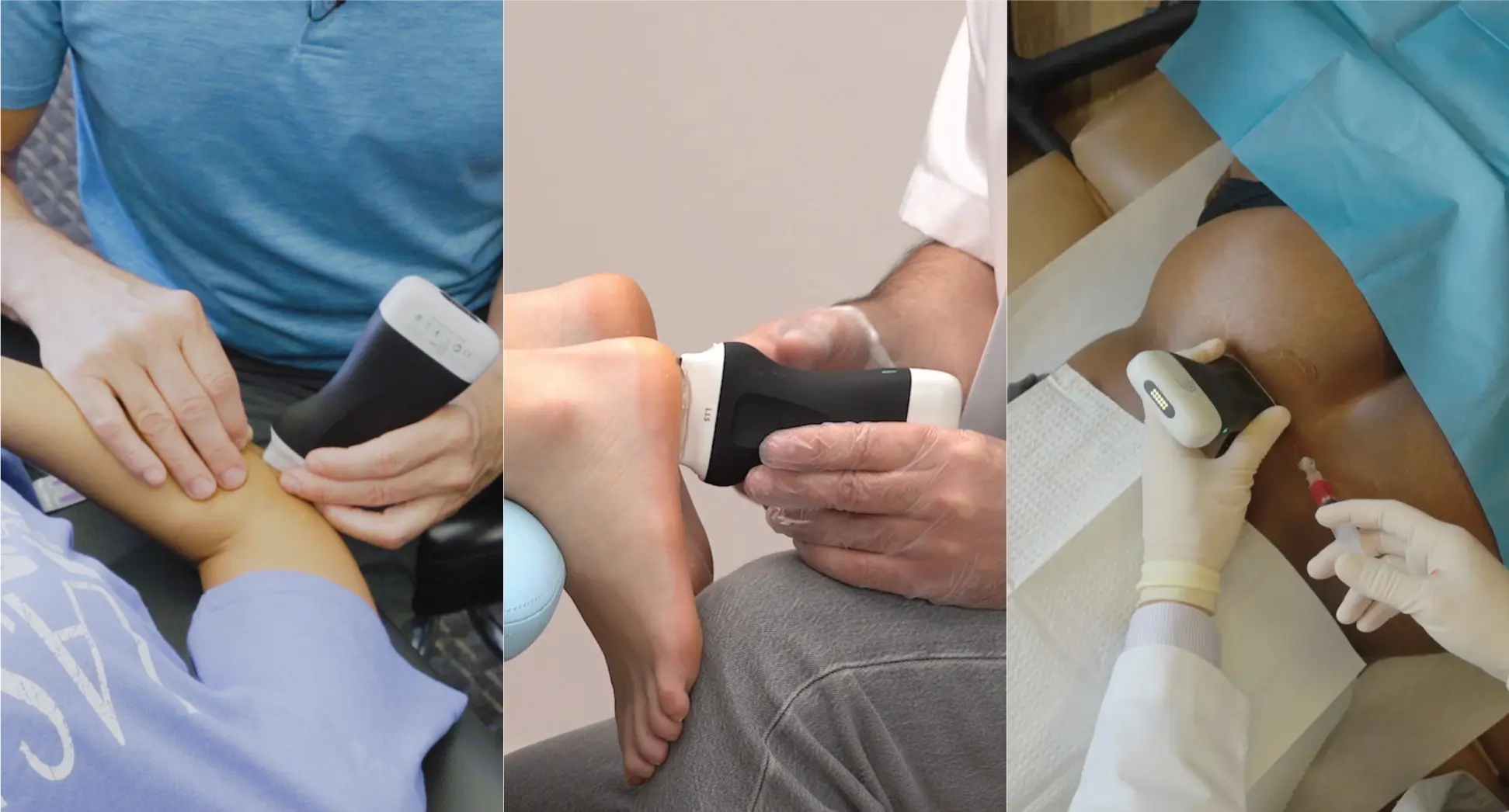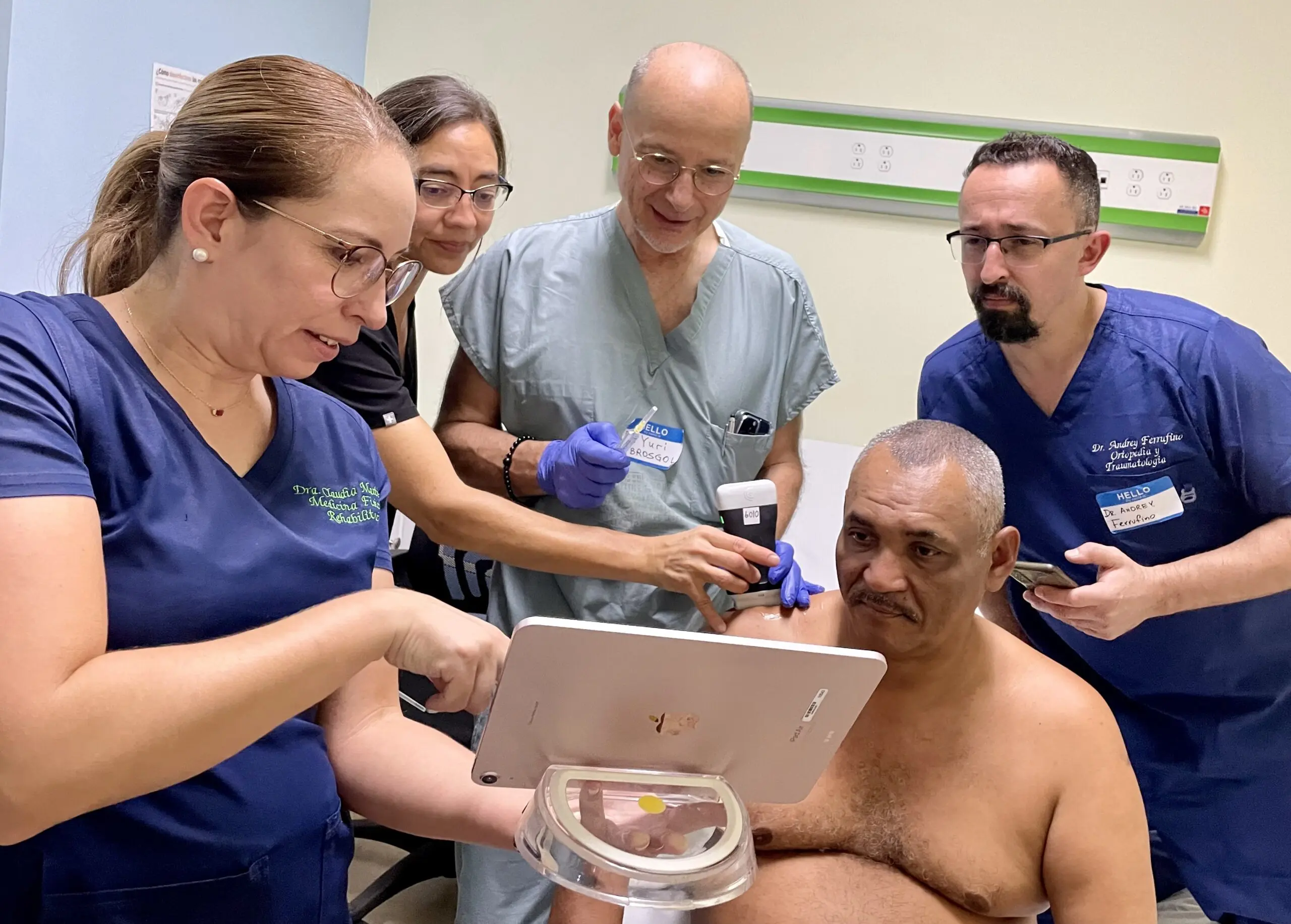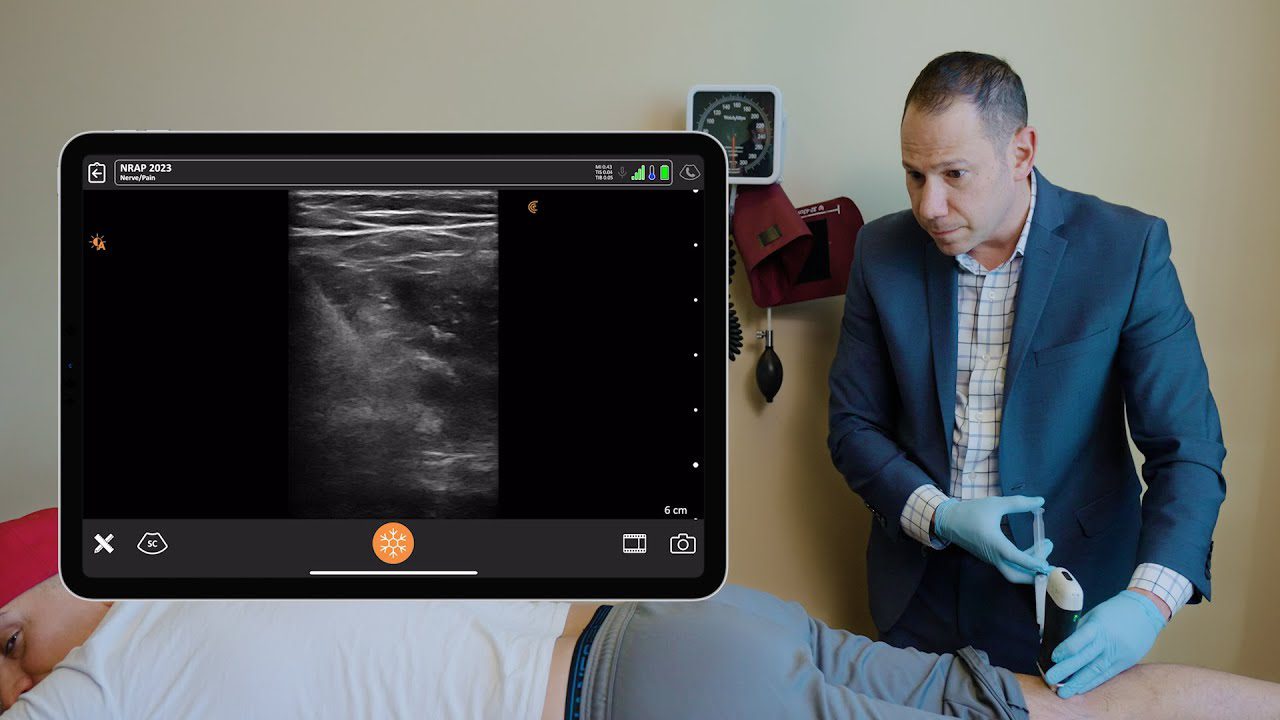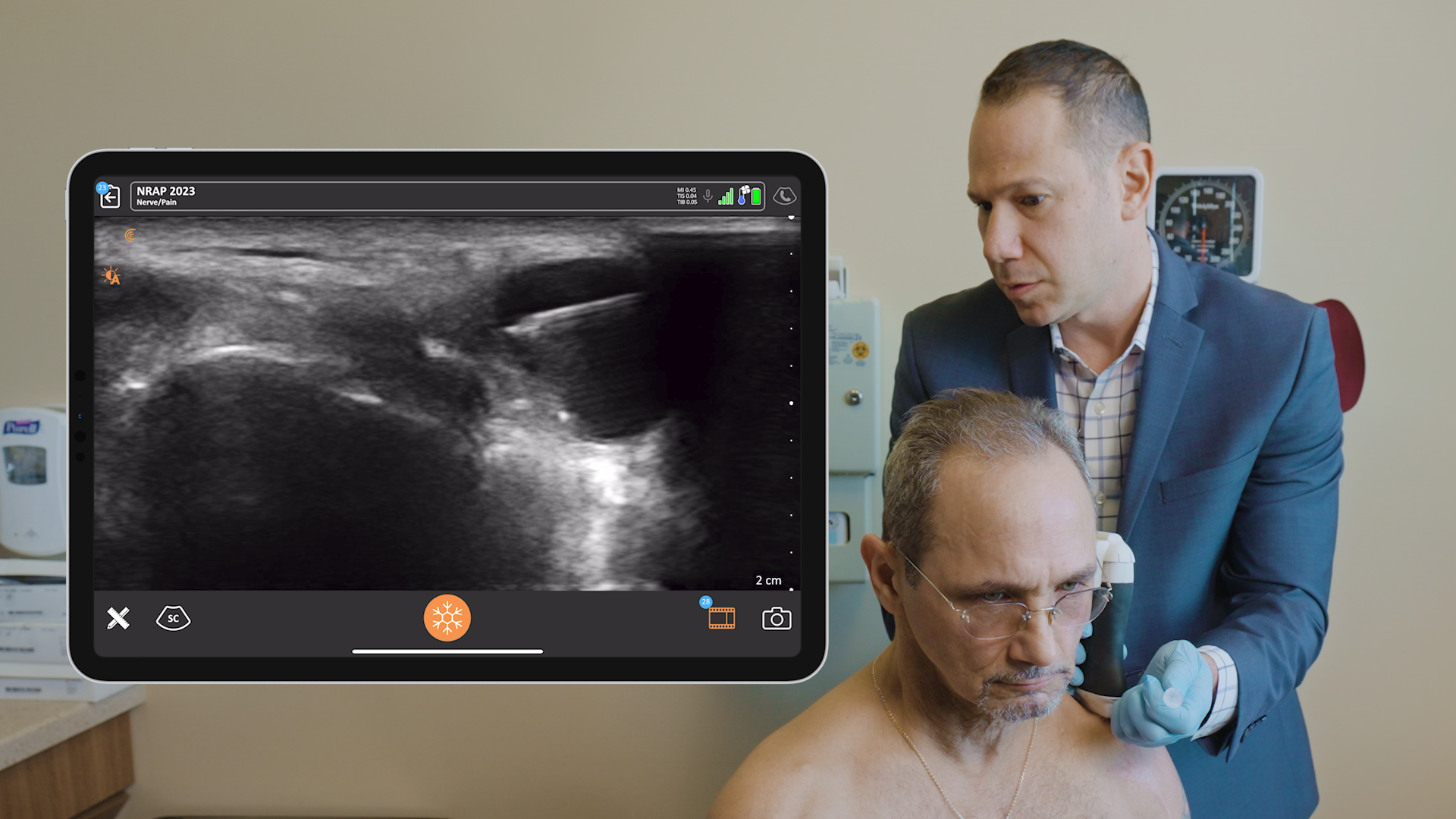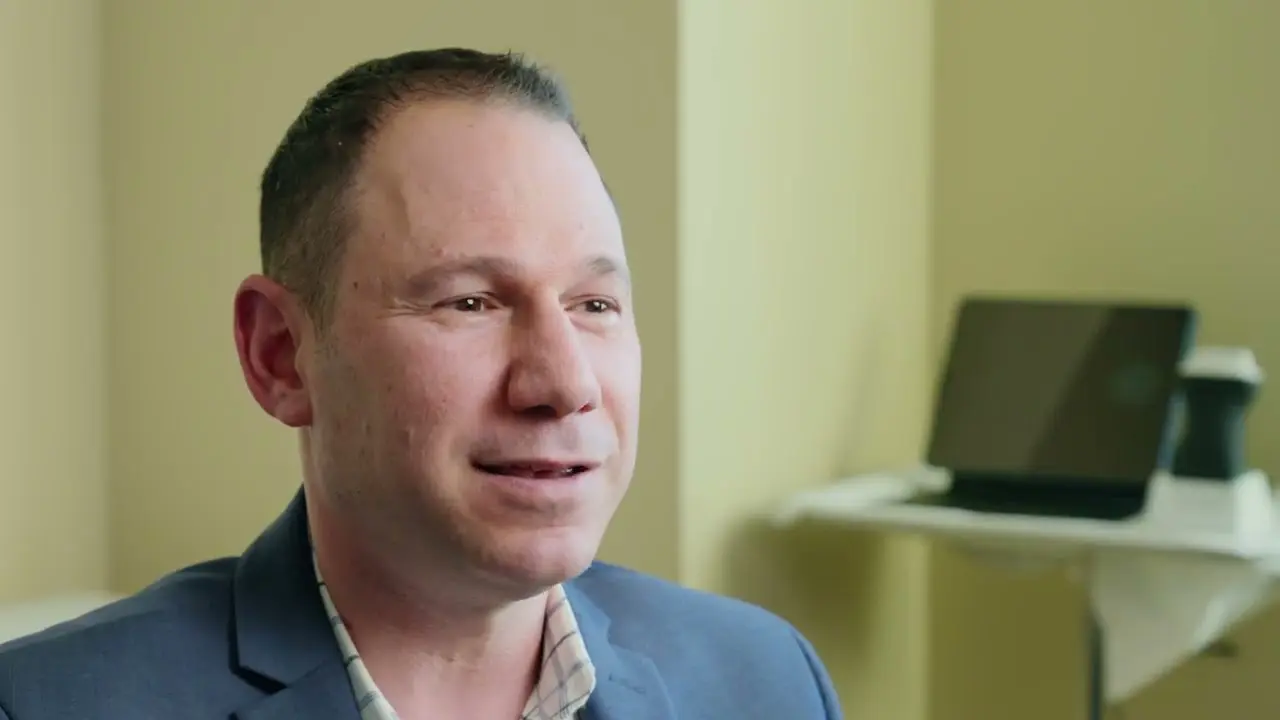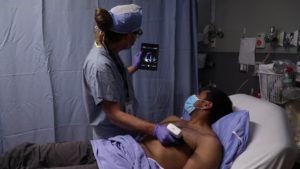“A lot of people still think an ultrasound machine is $30,000 and a giant tower or a big laptop or computer,” says Dr. David Rosenblum when asked about why more pain specialists aren’t using ultrasound in their practice. “They don’t realize that pocket-sized scanners like Clarius are available, affordable and easily implemented. I foresee that ultrasound is going to be more common in the pain practice, possibly standard.”
Dr. Rosenblum is the Director of Pain Management at Maimonides Medical Center in New York. A prolific educator, he hosts the Pain Exam Podcast and created a Pain Exam Board Review, which has helped over 3000 pain management physicians become board certified. He has been a Clarius user since 2017 and freely talks about how the device has positively influenced his pain practice and educational activities.
“It’s a great ultrasound. I really like using it. I love how portable it is because I take it from my Brooklyn to Great Neck practice and back. I travel with it to conferences or courses. I’m doing a series of webinars in which I am using this product, most of the time. And I’m creating a lot of good content for the pain management doctors who want to learn ultrasound. It has accelerated educational activities dramatically and has helped me communicate with other physicians and to teach them.”
Watch our video interview or read on to learn why Clarius ultrasound has become an invaluable tool that Dr. Rosenblum says he can’t live without.
1. Ultrasound guidance increases confidence and safety for many procedures.
Nerve blocks
“I use the Clarius unit to do genicular blocks and it’s very easy to find the nerve when you look for the blood vessel. You can also do the intra-articular injections, in which case, I use the ultrasound to avoid encountering bone,” notes Dr. Rosenblum while explaining that encountering bone during a knee injection, for example, can really hurt the patient.
“The stellate ganglion block, which is traditionally done under x-ray, is now something that can be done under ultrasound, and not x-ray, because it’s a lot safer.”
“If you don’t have a fluoroscope available, you can still help patients who have had lumbar radicular pain. The same applies with the cervical or thoracic spine. You can do thoracic paravertebral nerve blocks.”
Regenerative Medicine
“I think ultrasound will be the standard for regenerative medicine,” says Dr. Rosenblum, who is currently using Clarius to perform regenerative medicine procedures. “When patients are paying out of pocket for PRP or bone marrow aspirate, you want to be able to explain to them and justify that you are in the correct place of the body where those products need to be. And with an ultrasound, you can find that place easily and document it.”
Peripheral Neuromodulation
This procedure involves placing a wire on a peripheral nerve. “Some practitioners do this blind, which I don’t recommend,” warned Dr. Rosenblum who performs this procedure with ultrasound, exclusively.
“If you’re trained to do ultrasound, either regional anesthesia procedures or pain procedures, it’s quite easy to do. You’re putting the needle almost in the same place, possibly in a different orientation. But, you’re getting the tissue identified and then putting the needle or the introducer adjacent to the nerve, maybe parallel to the nerve, and you’re treading a lead that will eventually be used to stimulate the nerve. This is something that has actually been shown to help a lot of patients.”
2. Image quality is equal if not superior to other costly cart-based systems.
Dr. Rosenblum explains the importance of the image quality in using ultrasound for pain management, “It’s extremely important that I have good visualization of the structures under the skin so that I can avoid complications and maximize the chances of my procedure helping the patient.”
“Clarius provides a very clear image for such a small unit and such an affordable unit. It’s very surprising. We can see blood vessels, the lung or other structures that you do not want your needle to enter.”
3. You get more than you pay for, especially as it pays for itself.
“I recommend the scanner at the price of $4900 because within a few days, you can make that money back or at least the money you paid for the lease back by doing procedures with this machine. It has increased the volume of procedures I’m doing, as well as improved safety.”
With financing now available in Canada, the United States and the United Kingdom, pain management physicians can see positive ROI in their very first month of using Clarius in their practice.
“The Clarius L7 HD scanner provides me with superior image quality. It’s lightweight. I can bring it from room to room. It’s a quick setup and it gets the information after the procedure, communicating with my billing company and my electronic medical record system efficiently and effectively.”
“I’m doing more procedures because it’s less setup time. The device is quick. I take it out of my pocket or out of the drawer and it’s ready to go.”
4. Clarius Cloud simplifies billing and image management.
“I’m in the process of creating an ultrasound gallery and review, and it has made it a lot easier to import images and alter them for the purpose of teaching, as well as for the purpose of billing for the procedures I do in my practice. You don’t need to use a USB drive,” explains Dr. Rosenblum. “You’re able to print anything out. Everything happens seamlessly through the cloud. So, it’s a lot easier.”
Every Clarius device includes free, unlimited Clarius Cloud storage so physicians can easily organize, access, manage, review and share their exams anywhere and at any time.
“When it comes to billing, we need to show the insurance companies that we’re using an ultrasound by sending the image. It’s very important that we have a copy, especially with an image of the needle to the targeted structure or the spread of the medication around that target structure.”
Clarius makes the process simple. “We can have the image immediately uploaded to the cloud, at which point my receptionist or my biller can access this information for sending out the bills and justifying the ultrasound code that we use when we do these nerve blocks,” explained Dr. Rosenblum.
You’re invited to download our CPT Guide to see how much you can get reimbursed for ultrasound-guided procedures.
“The images can also upload to my photos on my iPad automatically without the patient’s name which is good for HIPAA reasons, and I can extract those photos to edit them for the publications and the educational endeavors I’m pursuing.”
5. You can carry ultrasound with you, anywhere.
“With the handheld ultrasound, you can just take the iPad, place it either on the patient’s bed or on another stand, and use the ultrasound. It’s wireless, so it’s pretty easy,” notes Dr. Rosenblum.
In addition to being a highly portable handheld device, Clarius is wireless, a design that offers several advantages, from allowing for free movement to easy infection control with no cords to clean.
“When I’m doing shots in my office on a busy day, I can move quicker and do more procedures in an efficient manner, because the machine is so portable. If a patient needs it in a different room, I can bring it into that room quite easily and get it up and running in less than a minute.”
Clarius is certainly more portable than cart-based systems. “I throw the handheld device into my back pack with the iPad, go from my office, down stairs to the ambulatory surgical center, and I do the shot without having to wield the big tower ultrasound back and forth across the whole entire ambulatory surgical center.”
Dr. Rosenblum appreciates using an ultrasound with zero footprint, “If you have less equipment in the room, less wires to trip over, it’s a big deal.”
6. It’s easy to use Clarius ultrasound.
“The technology is quite simple to use. We enter in the patient’s information on the app and the app wirelessly connects with Wi-Fi to the scanner, and then you press the scan button and you’re up and running,” says Dr. Rosenblum. It’s that easy.
“You visualize the tissue, you create a movie, you press save. And then when you end the exam, it can automatically get exported to the cloud where your staff can download the images for the EMR and for billing, and you may keep a local copy on your iPad or whatever device you’re using.”
“And the beautiful thing about this is, you can edit those images for teaching purposes. The images can be exported without the patient’s name so you’re protecting their privacy. My educational activities increased dramatically when I transitioned to the cloud platform because I was able to download lots of image trials quicker. I didn’t have to either print out and scan or use a USB device to extract the images from an older ultrasound unit.”
Thank you Dr. Rosenblum for sharing your success story in using Clarius to improve the care of patients who have been suffering from pain. As well, we very much appreciate all of your efforts with PainExam.com, educating physicians in using ultrasound for pain management. We’re most thrilled to launch some of your educational tutorials in our new Clarius Classroom!
Dr. Rosenblum currently uses the Clarius L7HD wireless ultrasound scanner for his practice and to teach ultrasound. The Clarius L7 is suitable for deep and superficial procedures. Visit our Clarius ultrasound for pain management page to learn about options for your practice or contact us today to book a call or demo with a Clarius expert.

